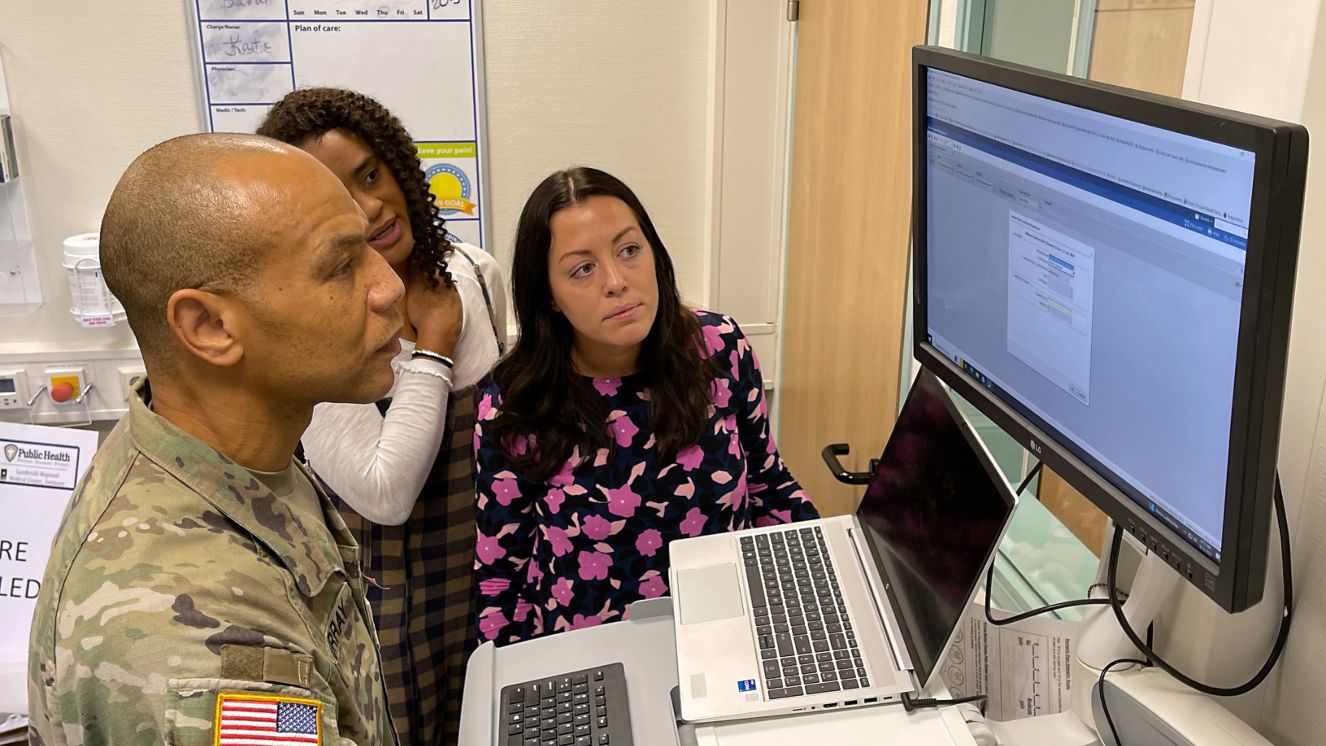HOW THE MILITARY IS USING METAVERSES AND MIXED REALITY

Over the last several months, the word “metaverse” has inevitably come to your attention. As it stands, many might envision cartoonish avatars representing a virtual world where we may or may not be trading cartoon monkeys worth millions of dollars. Or maybe they’re worthless, does anyone actually understand crypto!? Either way, the metaverse that Mark Zuckerberg is creating is only the beginning. Soon many different brands will make any number of new systems through emerging technologies. The U.S. military is no different. With its metaverse comes a variety of innovative technological features including virtual reality (VR), mixed reality (MR), augmented reality (AR), and more. Don’t let the tech talk fool you, these innovations are the next step in communication for America and its military. Related read: 7 of the Best Veteran & Military Spouse Tech Scholarships
Extended Reality Covers Mixed Reality and More in the Military
Many people are familiar with VR. It’s been around in part since 1968 and most have seen it in various forms, some commercial. Most are now familiar with VR's immersive experiences and fun video games. But there’s an entire world of tech out there that's ready to improve the way we connect, interact, and see the world. It can all be found under the umbrella term extended reality (XR), and the concepts are a lot less complex than the technology that enable them. Let’s explore these concepts and how the U.S. military is putting them to good use.
Virtual Reality in the Military
Branches of the military already love VR. In fact, AT&T brought 5G to the Air Force to help it improve its virtual reality capabilities. By using VR, the military is able to accomplish many goals, including training, collaborating, and communicating with personnel. Being in the military isn’t without its physical risks. Everyone knows that there are serious potential dangers and that is only part of why those who serve prove they are some of the bravest people to walk the Earth. However, technology is enabling the military to recreate dangerous scenarios without the risk of harming troops during training exercises. Virtual reality provides a realistic way to train troops in a number of ways. It can also be extremely cost-effective. This allows our military personnel the ability to gain advanced skills that they can use on the battlefield with less personal risk and fewer financial requirements. And it all adds up to gaining relevant knowledge that puts our troops at a tactical advantage against the enemy. For example, spending millions of dollars on tanks for training can be an expensive endeavor even for the U.S. military. Compare the sticker price of an M1 Abrams to the cost of a room full of VR headsets. The latter is a much, much cheaper option. Headsets are also versatile, allowing for multiple training courses all from the same device.
How Augmented Reality Will Advance the Armed Forces
Augmented reality is a bit different than its sister tech, VR. The easiest example of AR is to think back to the summer everyone went crazy over Pokémon GO. That is a perfect, early example of how AR works. AR is composed of virtual components that users interact with that are superimposed over reality. Don’t worry, the members of the Armed Forces are going to spend a lot less time searching for a cartoon mouse-like monster, and more time communicating. AR means maps, diagrams, and instructions that can be given out on the field for better direction, applied directly to the visible terrain. It can also help with manufacturing and creation which will allow for the production of better military equipment and ammunition. More like this: What To Look for When Buying Night Vision Goggles and 5 Great Options
What Is Mixed Reality?
Mixed reality, sometimes called combined reality, allows actions taken in the virtual world to affect changes in the real world. Although the early forms of this technology are not 100% accurate, an easy example would be using a filter over your selfie on social media. The future will mix reality with the virtual world in exciting ways that can be applied in a variety of fields. We’ve already seen demos involving surgeries performed using mixed reality, which opens the door for a variety of innovative medical operations. Troops involved in medical support can help perform vital operations in hard-to-reach places without having to physically be there. Education is also a huge factor in mixed reality when used for military purposes. As with the other examples of XR, mixed reality will be helpful for training our troops. In the end, a variety of industries will be affected, all of which have ties to the military, including production, management, logistics, and more.
The Future of Communications in the Military
A big part of what is making such innovations a possibility comes from the advancement of the telecommunications field. This is both from wired methods such as fiber, which allows for lightning-fast speeds, to wireless efforts in the world of 5G. The two main important components of telecommunications for using things connected via the Internet are speed and latency. Everyone understands speed, just think about the next time your Internet browser takes more than 0.0001 seconds to load and tell us how you feel. But latency is often overlooked. This is a shame because latency is the time it takes between you instructing a device to do something and that thing happening. For example, video games are impossible to enjoy with high latency because your reaction time is hindered. By the time the game records the action you've taken, you're already dead and sitting on the respawn screen. This is what’s known as lagging. 5G and fiber not only provide the ability to download and upload data faster, but they have higher capacity providing lower latency levels. The lower the levels, the less lag you’ll experience and the more complex operations you can perform. Military operations can’t afford a lapse in time. From medical operations to routine communications, they need secure lines that can perform in an instant. This is part of why the U.S. Space Force is so vital for the future of American military operations. The USSF will be helping make sure that everything from military operations using mixed reality to our smartphones are secure. More devices and capabilities mean that there are more opportunities for the enemies of America to find vulnerabilities. Thankfully, the newest military branch in America features some of the best in the world for cybersecurity to help keep our communications and information systems running securely.
The U.S. Military Metaverse
The U.S. military is building its own metaverse that will provide the Armed Forces with better training, design, and management while in the field. The technology is still developing, but many experts already recognize that the military metaverse is the future for various applications including training and decision-making. “I know that this is the future of military training. But I also see it as the future of the way that the military fights and makes decisions. So it's not just about fighting, it's about making decisions,” said Doug Philippone, Global Defense Lead for Palantir Technologies. Using VR along with artificial intelligence (AI) can help better train troops and best prepare them on the field to make key decisions during operations. One of the main issues is in getting the mixed reality and AR applications to come together, as they require having both virtual and real-world actions and reactions coexist. It’s still in its early stages, but the future of military metaverses is a promising one. Advancements keep piling up through necessity and tech improvements in the world of telecommunications.
Mixed Reality Helps Keep American Armed Forces Elite
Communication can equate to life or death. Using emerging tech such as mixed reality and metaverses is only going to help keep our military personnel better equipped to face America’s enemies. There are several challenges that lie ahead, including adoption, education, construction, and security concerns. There are also many opportunities. The future of communication in the U.S. military is going to blur the lines with science fiction sooner than you might expect. Suggested read: The Best Government Jobs for Veterans After the Military
BY BUDDY BLOUIN
Buddy Blouin is a Contributing Writer at VeteranLife.com
Buddy Blouin is a Contributing Writer at VeteranLife.com



